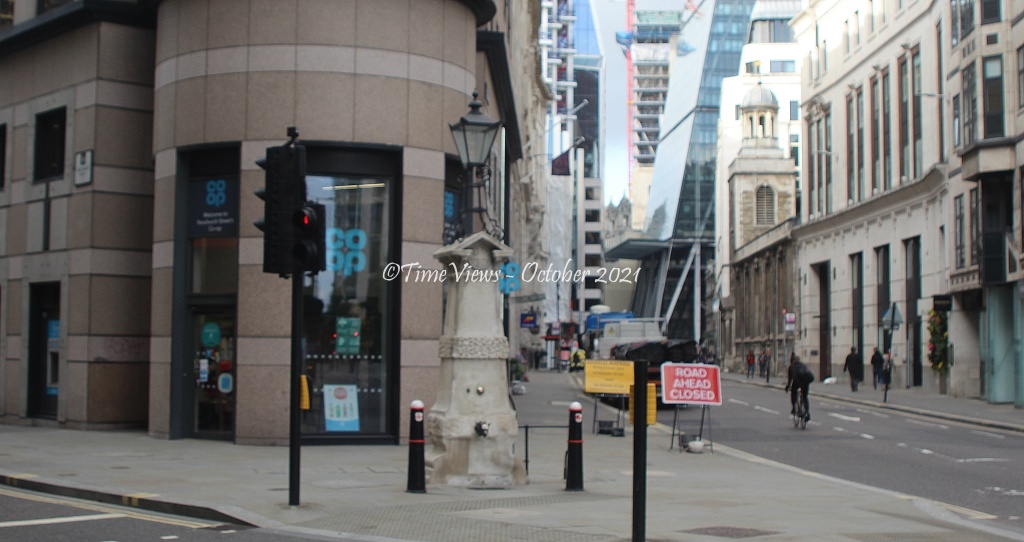
Served by one of London’s many underground streams, the water from the pump had been described as “bright, sparkling, and cool, and of an agreeable taste”. However, the pump is perhaps most famous for the Aldgate Pump Epidemic of 1860. Initially, people complained about the water’s foul taste. Following an investigation, it was discovered that the water that fed the fountain came from Hampstead in NW London and, during its journey to the pump, had passed through a number of the new graveyards that had emerged in this period of rapid growth in London. This had the effect of taking with it the bacteria, germs and calcium from the decaying bodies. Several hundred people died as a result of drinking the polluted water.
This structure dates from 1876 when the pump was moved to facilitate road widening. There is a metal head of a wolf on the pump’s spout – supposedly to represent the last wolf shot in the City of London.
Image: Photographer unknown (1900s)

The church was extensively restored in 1962 and remains the only surviving Jacobean church in London.
Image: © Steven Miell (TimeViews) (2021)

